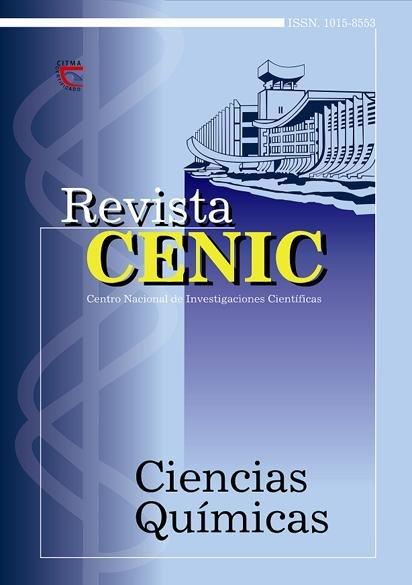CONTRIBUTION TO THE STUDY OF HYDRODYNAMICS AND TRANSFER OF MASS IN STIRRED TANK REACTORS THROUGH A GLOBAL APPROACH AND LOCAL IN GAS-LIQUID SYSTEMS
Abstract
Stirred tanks have historically been used in the biotechnological, food and chemical industries. In Cuba constitutes the type of reactor used par excellence for most productions, both biotechnological and chemical, of hence the importance of continuing to delve into basic research on this type of reactor. The main function of stirring is to speed up the processes of heat and mass transfer, which is achieved by introduction of energy into the fluid volume by rotation of the impeller and conversion of this energy into hydrodynamic motion. That is why a detailed understanding of hydrodynamics (velocity fields, turbulence, turbulent kinetic energy dissipation velocity distribution, etc.) is essential for the synthesis of the processes to be carried out in stirred tanks. For example, studies of turbulent energy dissipation in stirred tanks, especially in the impeller region and in the discharge region of the latter, are necessary to advance the understanding of mixing phenomena such as the formation of dispersions of bubbles and therefore in the synthesis of fermentation processes aerobic and gas-liquid reactions, among others.
Downloads
Published
How to Cite
Issue
Section
License
Copyright (c) 2004 Copyright (c) 2004 Revista CENIC Ciencias Químicas

This work is licensed under a Creative Commons Attribution-NonCommercial-ShareAlike 4.0 International License.
Los autores que publican en esta revista están de acuerdo con los siguientes términos:
Los autores conservan los derechos de autor y garantizan a la revista el derecho de ser la primera publicación del trabajo al igual que licenciado bajo una Creative Commons Atribución-NoComercial-CompartirIgual 4.0 que permite a otros compartir el trabajo con un reconocimiento de la autoría del trabajo y la publicación inicial en esta revista.
Los autores pueden establecer por separado acuerdos adicionales para la distribución no exclusiva de la versión de la obra publicada en la revista (por ejemplo, situarlo en un repositorio institucional o publicarlo en un libro), con un reconocimiento de su publicación inicial en esta revista.
Se permite y se anima a los autores a difundir sus trabajos electrónicamente (por ejemplo, en repositorios institucionales o en su propio sitio web) antes y durante el proceso de envío, ya que puede dar lugar a intercambios productivos, así como a una citación más temprana y mayor de los trabajos publicados (Véase The Effect of Open Access) (en inglés).













